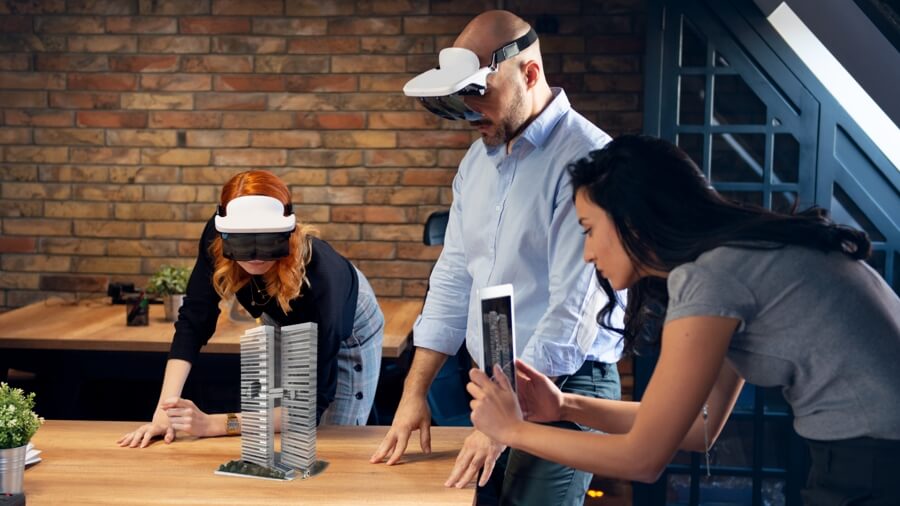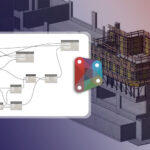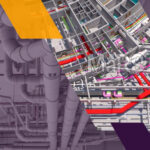BIM methodology is the newest and the latest technology that has entirely changed the ideas of designing and developing a data-rich building project. The information that the BIM modelers shares gives access to the stakeholders to create, understand and visualize the BIM model through the help of AR and VR technology.
The era of the construction industry has changed drastically. It is a way in which AEC industries are shifting their paradigm to embrace BIM Services as the fastest tool that can assist in integrating the entire industry by eradicating inefficiencies and inaccuracy in the overall construction project productivity. Also, with the undertaking of BIM Methodology, the level of work is getting increased with improved collaboration, proper communication channels, and proper team efforts.
Today, in this blog we will be highlighting key data that have bought a great change in the BIM method and its integration with the help of AR – augmented reality and VR – virtual reality features.
In the last couple of years, the construction industry is slowly and gradually shifting its paperwork design and drawings to adopt digital technologies, to improvise the overall project lifecycle in the form of getting its conceptual design to having its physical construction at the site. Knowing such importance and understanding its demand in the current work, people are thus adopting the reality technologies such as augmented reality (AR) and virtual reality (VR).
According to the latest survey and reports, it is found that for BIM projects, construction sectors are more reliant on these two technologies, such as augmented reality (AR) and virtual reality (VR). Hence, the need and demand for these technologies have increased exponentially. Having said this, let us now see how these two technologies are benefiting the entire BIM concept and its methodology.
AR integration in BIM capacities

The construction industry nowadays is heading towards a digitalization process that helps them in gaining the application in virtual models and a much more sophisticated manner. Concerning the current construction sector, there is a possibility of uncertainty in getting full-fledged information about the project management, and this, therefore, hinders the project execution.
However, there is still a technique within the construction industry in which this automated application is not yet known to be a common practice. This is the core reason that clarifies the slower growth rate in adopting this digital growth in the given construction sector. Hence, the undertaking of the BIM method, which aims to adopt the augmented reality (AR) technique, is taken into consideration as the content in the construction industry.
In the whole process of the BIM model workflow, the software that is used in the architecture framework of AR-BIM is developed using the Unity model. Also, the process and method of BIM in the construction industry help make decisions with ease and in a focused area that enhances AR-BIM adoption in respective organizations.
VR and BIM capacities

Virtual reality (VR) technology leads to better communication for key players across the building sector based on greater design visualization, contributing to a better understanding of the project. This process, along with having knowledge about these different types of data, always helps in associating with better collaborative information. Also, with VR-BIM technology, the identification of each parameter and its object can be done with the help of a proper and data-driven BIM modeling process.
The modern technique of the VR-BIM process is of great use and importance. The core reason for this is to have a deep analysis of problems and also discuss alternative solutions. Interacting with the BIM model, in order to visualize the geometry of the elements and to consult the parametric data, is an improvement in the development of a collaborative project.
The acceptance of VR-BIM use in the construction field has seen tremendous growth. Moreover, the process of VR-BIM assists in enabling the user to immerse themselves in a proper place and proper scale of work. With VR technology, a 3D-based model can be created and can provide immersive information that is yet to be constructed and built-in at the construction site. Architectural, engineering, and construction management professionals recognize that VR applications are making it easier for clients to visualize designs earlier, shaving material costs off budgets and reducing the number of workers needed for projects.
Moving further, the process of VR technology is applied in the entire BIM model to check BIM stages that are from a facility management level to its maintenance schedule, i.e 7D BIM model. VR technology can improve BIM methodology, as it allows interaction with 3D BIM models in two essential ways:
- Walkthrough
- Consulting data
- Unity 3D model
Final Conclusion
The blog shared discusses the importance of undertaking the BIM method with AR/VR technology. Also, the best part about getting full-fledged support and assistance from a BIM outsourcing company is that they have their team who are in touch with their clients to update them on all the pieces of information of their BIM project with the given method and technology.



